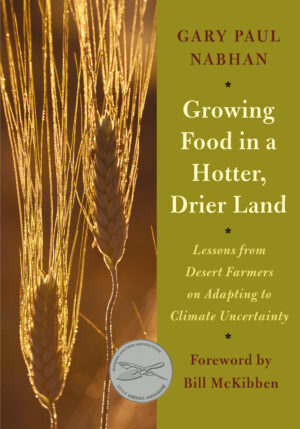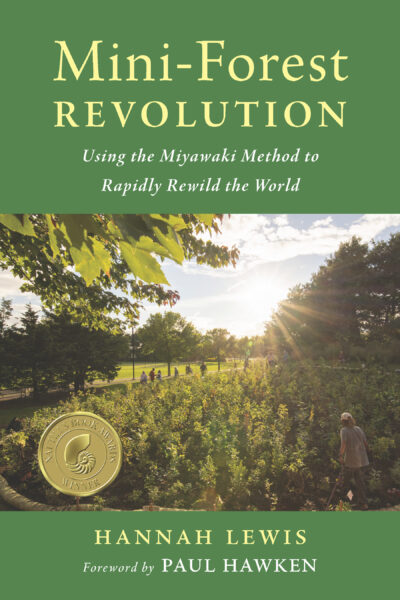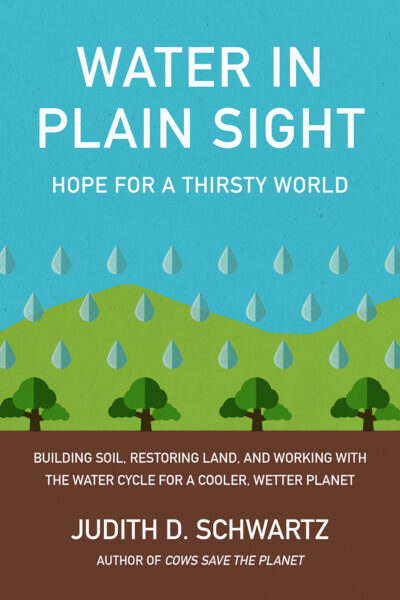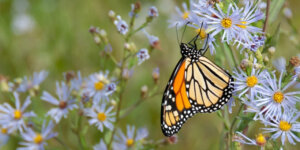Growing Food in the Face of a Hotter, Drier Land
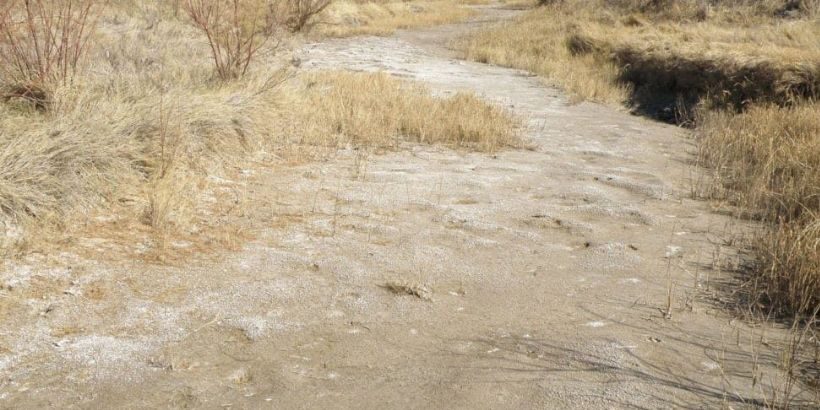
Climatic uncertainty has become “the new normal,” and many farmers, gardeners and orchard-keepers in North America are desperately seeking ways to adapt their food production to become more resilient in the face of such “global weirding.”
The following is an excerpt from Growing Food in a Hotter, Drier Land by Gary Paul Nabhan. It has been adapted for the web.
In the early 1980s, I had the good fortune to stumble upon what may be the hottest, driest environment in which traditional desert farmers had produced food in North America. It occurred at a place named Suvuk, on the Pinacate volcanic shield of Mexico’s Gran Desierto, with at least 40 miles of lava flows, dunes, and dry playa lake beds between it and the nearest city. Now part of Mexico’s National Biosphere Reserve for the Pinacate and surrounding Gran Desierto, it has gone as long as 36 months without any measurable precipitation; summer temperatures frequently reach 120 ̊F (49 ̊C). One morning in midsummer, I happened to be flying over the Pinacate just as a Mexican family began sowing corn, beans, and cucurbits in the wake of the first rains of the summer season.1
Curious to learn what these desert dwellers might be planting in the midst of such an extreme landscape, I drove to the edge of the lava and visited the field on foot several more times over the growing season. There, I recorded air temperatures of 114 ̊F (46 ̊C) in the full sun and ground temperatures of 165 ̊F (74 ̊C) while talking to the farmers and taking the leaf temperatures of crop plants! Rains came only two more times that year, but the silty loam in the field stored enough soil moisture from that very first rain to bring nearly all the crops—Mexican June corn, two bean species (teparies and pintos), squash, and watermelons—to their flowering stage.
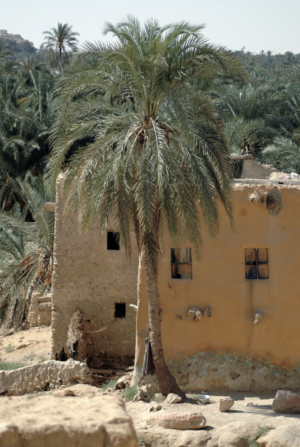
Date palms are used to shade house walls and reduce the heat load in Egypt’s Siwa oasis, in the heart of the Sahara Desert.
The little desert-adapted tepary bean plants had the capacity to grow prolifically and produce beans, but nearly all the pinto beans sown the same day germinated but increasingly suffered from heat stress. The pinto plants first aborted their flowers, then their pods, and then their leaflets closed up, shriveled, and withered away. Meanwhile, the tepary bean leaflets stayed active, tracking the sun’s movements most of the day. It was as if they were solar collectors programmed to expose the broadest possible surfaces of their leaves to the burning sunlight in order to capture as much energy as quickly as possible. Relying solely on three brief rains and runoff from the volcanic slopes just upstream from the field, the tepary bean plants produced a yield equivalent of 1,200 pounds per acre without any supplemental irrigation. The pintos produced less than a cup. The desert-adapted corn, squash, and watermelon varieties did nearly as well as the tepary beans.
However anecdotal such an incident may be, it reminds me of two realities that already affect our food security, and that will become even more prevalent in the future. One of these realities may bring out the pessimist in you, while the other may bring out the optimist.
The first reality is that many places in North America are now regularly suffering summer temperatures of greater than 100 ̊F (38 ̊C) whereas they rarely did so in the past. Such heat waves place unprecedented stress on crop varieties and livestock breeds that have little thermo-tolerance for temperatures above 95 ̊F (35 ̊C). When heat levels reach beyond the physiological limit of certain horticultural crops such as beans, the production of floral buds, open flowers, and pods declines, the ones that are produced abort and drop from the plant, and the number of seeds set per plant becomes drastically reduced or negligible.2 The heat-stressed plants are also more vulnerable to leaf-eating insects and the viruses they sometimes carry. After reaching certain thresholds of heat and moisture stress—for these two factors are tightly entwined—the crop plant simply succumbs to high fever and dies.
Such plant-damaging temperatures are clearly upon us with ever-increasing frequency. In 2011, Yuma, Arizona—the closest US city to the little bean field at Suvuk, Sonora—suffered 114 days with temperatures reaching 100 ̊F or more, and 177 days over 90 ̊F (32 ̊C). But such long durations of temperatures rising above 90 every day are no longer restricted to true desert regions. In 2011 and 2012, cities in the following states set new records for longest streaks of extreme temperatures (over 90 ̊F each day) in their history: Arkansas, Georgia, Indiana, Kansas, Louisiana, New Mexico, North Carolina, Ohio, Oklahoma, and Texas. In northern states from Maine to Illinois and South Dakota, cities reached temperatures of 100 ̊F for the first time ever, or for the first time in decades. In more southerly locales, such as those in the Hill Country near Austin, Texas, farmers had to deal for the first time ever with 90 days of triple-digit temperatures. This heat wave hit Texans just as wildfires
Date palms are used to shade house walls and reduce the heat load in Egypt’s Siwa oasis, in the heart of the Sahara Desert and drought wreaked havoc all around them. The following year (2012), nearly two-thirds of the North American heartland faced comparable heat waves and drought conditions, devastating the US corn crop and forcing food prices to rise to unprecedented heights.
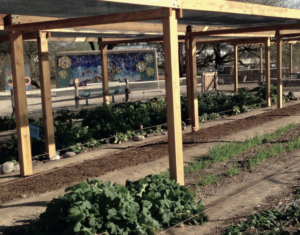
A shade-cloth-covered Southwestern-style ramada allows vegetable production throughout the summer at Tucson Village Farm in Arizona.
Of course, the earth’s high fever has not yet broken. In a landmark report, the Intergovernmental Panel on Climate Change (IPCC) synthesized the results of 23 climate change prediction models. Based on a set of well-vetted assumptions about the future release of greenhouse gases, these models predicted a globally averaged increase of between 3.2 ̊F (1.8 ̊C) and 7.2 ̊F (4.0 ̊C) over the next century.3 That, of course, will put crops with low thermo-tolerance in the danger zone for heat stress throughout most of the major food-producing regions in North America.
This brings us to the second reality that hit me like a revelation while I was working at the Suvuk bean field, wedged between those two lava flows in the Gran Desierto. While most crops and cropping patterns do not muster enough thermo-tolerance to help us avert a food security crisis, some do. It may be true that “the existing climate of much of the [Desert Southwest] is already marginal to agriculture,”4 but innovative farmers have found ways to build “guilds” of mutually adapted crop varieties, livestock breeds, and canopy plantings, which steadily produce food even when placed in the heat of arid subtropical and tropical landscapes.
Such guilds exhibit “collective” strategies for alleviating heat stress and making the best possible use of the solar energy that cascades through their guild or micro-community. Most remarkably, farmers from all around the world have developed substantial reservoirs of knowledge about how to place these food crops in contexts where they seldom, if ever, bear the brunt of heat stress. Let’s see what has worked for them that may also be adapted, refined, or used analogously in your particular foodscape.
Notes
- Gary Paul Nabhan and Paul Mirocha. 1985. Gathering the Desert. University of Arizona, Tucson.
- Hide Omae, Ashok Kumar, and Mariko Shomo. 2012. “Adaptation to High Temperatures and Water Deficit in the Common Bean (Phaseolus vulgaris L.) During the Reproductive Period.” [Indian] Journal of Botany 80414: 1–6.
- G. A. Meehl, T. F. Stocker, W. D. Collins, P. Friedlingstein, A. T. Gaye, J. M. Gregory, A. Kitoh, R. Knutti, J. M. Murphy, A. Noda,
S. C. B. Raper, I. G. Watterson, A. J. Weaver, and Z. C. Zhao.,
S. Solomon, D. Qin, M. Manning, Z. Chen, M. Marquis, K. B. Averyt, M. Tignor, and H. L. Miller, editors. 2007. “Global Climate Projections.” In Climate Change 2007: The Physical Science Basis. Contribution of Working Group I to the Fourth Assessment Report of the Intergovernmental Panel on Climate Change. Cambridge University Press, Cambridge, UK, and New York. - Jim Norwine, John R. Giardino, Gerald R. North, and Juan B. Valdés. 1995. The Changing Climate of Texas: Predictability and Implications for the Future. Texas A&M University, College Station.
Recommended Reads
Recent Articles
Garden strawberries are excellent for both covering the ground and for growing fruit. If you’re planning out a forest garden, or are just looking for a plant to use as ground cover, strawberries are a great option. The following is an excerpt from The Home-Scale Forest Garden by Dani Baker. It has been adapted for…
Read MoreFor too long, bugs have had a negative connotation associated with them. But what if we took the time to observe the benefits of insects? It’s time to rebug our gardens, lawns, and parks! The following is an excerpt from Rebugging the Planet by Vicki Hird. It has been adapted for the web. Adding Bugs:…
Read MoreAsparagus is a delicious vegetable with a layered history. How did this aspiring spear make its way from growing in the wild to appearing on our plates? The following is an excerpt from the The Seed Detective by Adam Alexander. It has been adapted for the web. “Nature gives us the key to every secret…
Read MoreInterested in growing trees? Here are some tips on successfully planting, transplanting, and pruning trees to create a flourishing forest garden! The following is an excerpt from The Home-Scale Forest Garden by Dani Baker. It has been adapted for the web. Planting Potted Trees and Shrubs If you order potted trees, check with your supplier to…
Read MoreChances are, you’ve seen cattails growing on the edge of your local lake or stream at least once or twice. Instead of just passing these plants, try foraging for and cooking them to create delicious seasonal dishes! The following excerpt is from The New Wildcrafted Cuisine by Pascal Baudar. It has been adapted for the…
Read More

